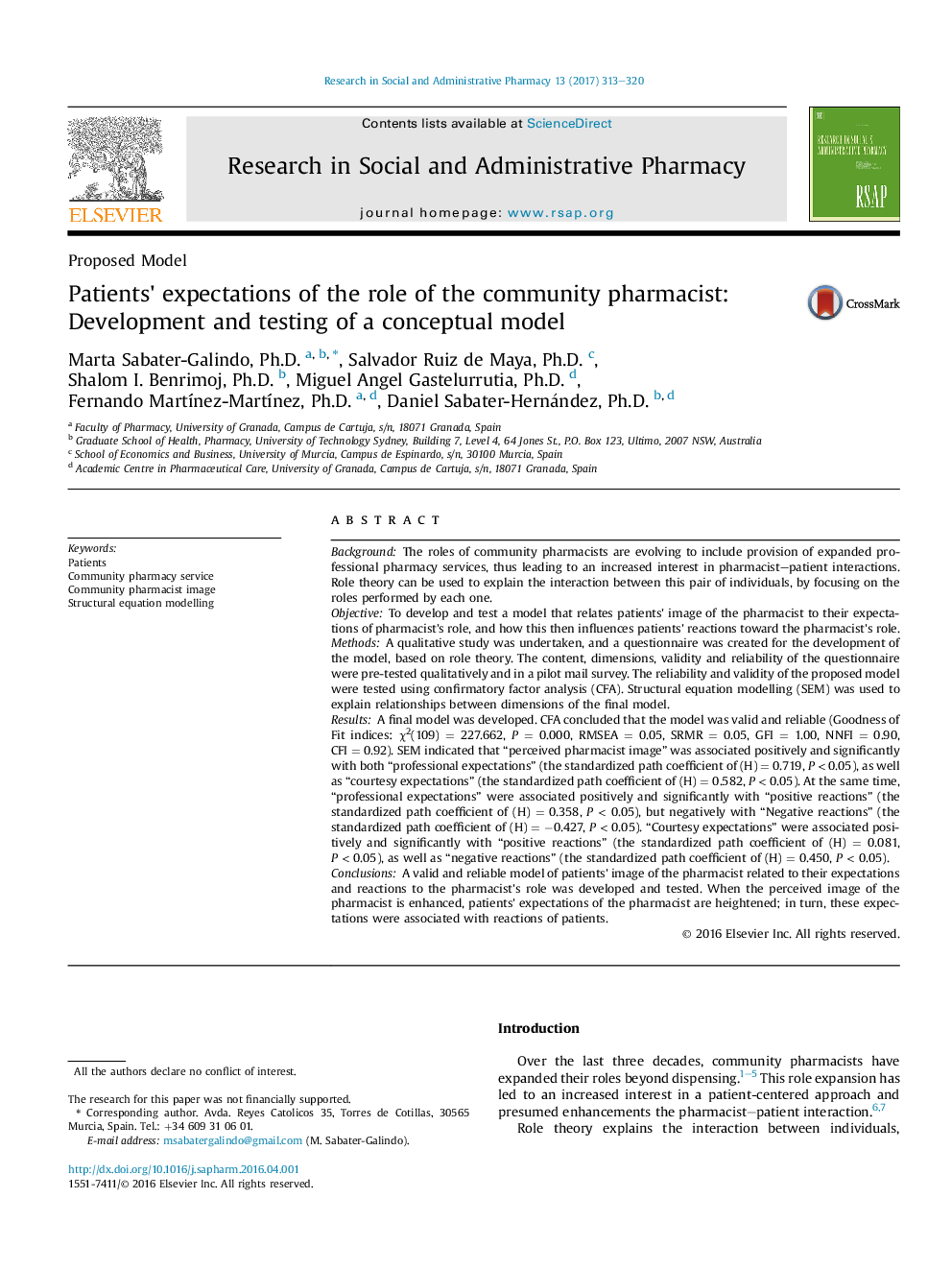| Article ID | Journal | Published Year | Pages | File Type |
|---|---|---|---|---|
| 5551192 | Research in Social and Administrative Pharmacy | 2017 | 8 Pages |
BackgroundThe roles of community pharmacists are evolving to include provision of expanded professional pharmacy services, thus leading to an increased interest in pharmacist-patient interactions. Role theory can be used to explain the interaction between this pair of individuals, by focusing on the roles performed by each one.ObjectiveTo develop and test a model that relates patients' image of the pharmacist to their expectations of pharmacist's role, and how this then influences patients' reactions toward the pharmacist's role.MethodsA qualitative study was undertaken, and a questionnaire was created for the development of the model, based on role theory. The content, dimensions, validity and reliability of the questionnaire were pre-tested qualitatively and in a pilot mail survey. The reliability and validity of the proposed model were tested using confirmatory factor analysis (CFA). Structural equation modelling (SEM) was used to explain relationships between dimensions of the final model.ResultsA final model was developed. CFA concluded that the model was valid and reliable (Goodness of Fit indices: Ï2(109)Â =Â 227.662, PÂ =Â 0.000, RMSEAÂ =Â 0.05, SRMRÂ =Â 0.05, GFIÂ =Â 1.00, NNFIÂ =Â 0.90, CFIÂ =Â 0.92). SEM indicated that “perceived pharmacist image” was associated positively and significantly with both “professional expectations” (the standardized path coefficient of (H)Â =Â 0.719, PÂ <Â 0.05), as well as “courtesy expectations” (the standardized path coefficient of (H)Â =Â 0.582, PÂ <Â 0.05). At the same time, “professional expectations” were associated positively and significantly with “positive reactions” (the standardized path coefficient of (H)Â =Â 0.358, PÂ <Â 0.05), but negatively with “Negative reactions” (the standardized path coefficient of (H)Â =Â â0.427, PÂ <Â 0.05). “Courtesy expectations” were associated positively and significantly with “positive reactions” (the standardized path coefficient of (H)Â =Â 0.081, PÂ <Â 0.05), as well as “negative reactions” (the standardized path coefficient of (H)Â =Â 0.450, PÂ <Â 0.05).ConclusionsA valid and reliable model of patients' image of the pharmacist related to their expectations and reactions to the pharmacist's role was developed and tested. When the perceived image of the pharmacist is enhanced, patients' expectations of the pharmacist are heightened; in turn, these expectations were associated with reactions of patients.
